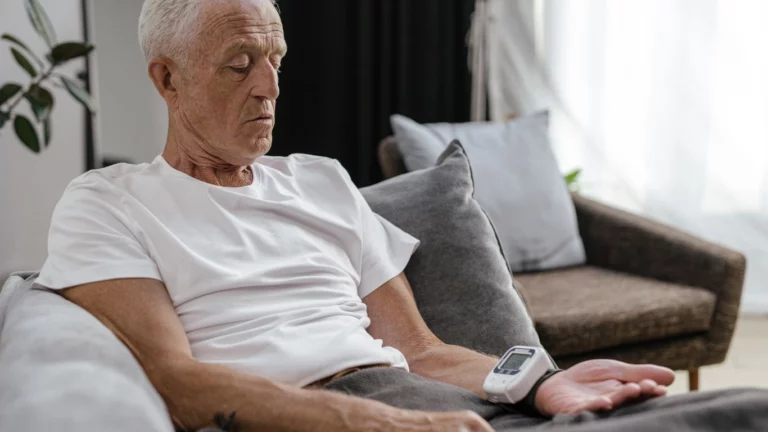Symptoms of Rheumatoid Arthritis in the Hands – A Comprehensive Guide
Are you feeling pain, stiffness, or swelling in your hands and wondering if it could be rheumatoid arthritis (RA)? You’re not alone. RA is a chronic autoimmune disease that often begins in the hands, causing discomfort and difficulty with daily tasks. In this guide, we’ll walk you through the common symptoms of rheumatoid arthritis in the hands and how to manage the condition effectively.
What is Rheumatoid Arthritis?
Before we dive into the symptoms in the hands, it’s helpful to know what rheumatoid arthritis is. RA is an autoimmune condition where your body’s immune system mistakenly attacks the lining of your joints, causing inflammation. Over time, this inflammation can lead to joint damage, which is why catching it early is so important.
In most cases, RA starts in smaller joints, like those in your hands and wrists, before potentially affecting larger joints like the knees or shoulders. It’s chronic, meaning it lasts long-term, and can fluctuate with periods of flare-ups and remission.

Common Symptoms of Rheumatoid Arthritis in the Hands
So, how can you tell if rheumatoid arthritis is affecting your hands? There are several common symptoms that typically show up:
1. Pain and Tenderness
Pain is one of the most obvious symptoms of rheumatoid arthritis. It often feels like a deep ache, and it can make simple tasks—like holding a pen or opening a door—difficult. The pain usually worsens in the mornings, which is typical of RA, and can last for hours.
2. Swelling and Inflammation
Swelling in the joints is a hallmark of RA. You might notice your knuckles or fingers becoming visibly swollen, and they may feel warm to the touch. This swelling is caused by the inflammation in the joint lining. Over time, it can lead to joint deformities, so it’s important to manage the condition early on.

3. Stiffness in the Hands
Stiffness in the hands, especially after periods of inactivity like sleep, is another common symptom. People with RA often experience what’s known as “morning stiffness,” where it’s difficult to move their hands or fingers for the first 30 minutes or even longer after waking up. This stiffness can also occur after periods of rest during the day.
4. Decreased Grip Strength
As the disease progresses, you might notice a decrease in your hand strength. It can become harder to grip objects or perform tasks that require fine motor skills, like typing, buttoning clothes, or opening jars. This can be frustrating, but there are treatments and exercises that can help.
5. Joint Deformities
Over time, untreated or poorly managed RA can cause deformities in the hands. You might notice that your fingers begin to twist or bend, especially at the joints closest to the nails. This can be quite noticeable and may lead to difficulty performing daily activities.

How RA Affects Hand Mobility
One of the main reasons that rheumatoid arthritis can be so disruptive is because it affects hand mobility. The inflammation in the joints makes it harder to bend, grip, or twist your hands, which impacts your ability to do everything from typing to cooking to holding a phone. This can be a major problem for people with RA, especially if their job or hobbies require a lot of hand movement.
Additionally, the pain and stiffness in the morning can make it feel like your hands are “stuck,” and it may take a while before you’re able to move them freely. Early treatment can help reduce inflammation and prevent further loss of mobility.
Managing Rheumatoid Arthritis in the Hands
If you’ve been diagnosed with RA or suspect it, managing the symptoms is key to preventing joint damage and improving your quality of life. Here are some ways you can help manage symptoms:
1. Medication
The most common treatment for RA is medication. Disease-modifying antirheumatic drugs (DMARDs) can help slow the progression of the disease by targeting the immune system. Methotrexate is one of the most commonly prescribed DMARDs for RA. Steroids like prednisone can also be used for short-term flare-ups to reduce inflammation.
2. Physical Therapy
A physical therapist can help you maintain hand mobility and strength through exercises specifically designed for RA. They can also recommend splints or other devices to help stabilize your joints and reduce pain.
3. Hot and Cold Therapy
Applying heat or cold to the affected joints can help reduce pain and inflammation. A warm soak or heating pad can relieve stiffness, while cold compresses can help reduce swelling and pain during flare-ups.
4. Lifestyle Modifications
It’s also important to make changes in your daily routine to protect your hands. This might mean avoiding repetitive motions that put strain on your joints, using assistive devices (like jar openers), and practicing good hand posture. Eating a healthy diet rich in anti-inflammatory foods like omega-3 fatty acids can also support your treatment plan.
5. Surgery (In Severe Cases)
In rare cases where medication and physical therapy don’t provide relief, surgery might be necessary to repair or replace damaged joints. Joint replacement surgery or synovectomy (removal of inflamed tissue) can help improve function in the hands.

Appendices
Frequently Asked Questions (FAQs)
- Can rheumatoid arthritis cause permanent damage to the hands? Yes, if left untreated, RA can cause irreversible joint damage and deformities. Early diagnosis and treatment are crucial to prevent this.
- Is rheumatoid arthritis in the hands treatable? Absolutely. With the right combination of medication, physical therapy, and lifestyle changes, you can manage RA symptoms and prevent further damage.
- Can I still work with rheumatoid arthritis in my hands? Many people with RA continue to work by adapting their work environment and using assistive devices. Occupational therapy can help with this.
- Does rheumatoid arthritis affect both hands equally? RA often affects both hands, but it may be worse in one hand compared to the other. Symmetry is one of the characteristic features of RA.
- What foods should I avoid if I have rheumatoid arthritis? While there’s no specific “RA diet,” it’s recommended to avoid processed foods and excess sugar. Anti-inflammatory foods, like fatty fish and leafy greens, may help manage symptoms.
References
For more information on managing rheumatoid arthritis, consider these sources:
- American College of Rheumatology (ACR). (2023). Rheumatoid Arthritis: Symptoms and Treatment. Read Article
- National Institute of Arthritis and Musculoskeletal and Skin Diseases (NIAMS). (2024). Rheumatoid Arthritis: What You Need to Know. Read Article
- Johns Hopkins Arthritis Center. (2023). Understanding RA and Hand Function. Read Article
Disclaimer
The information provided in this article is for educational purposes only and is not intended as a substitute for professional medical advice. Always consult with your doctor or healthcare provider for diagnosis and treatment of rheumatoid arthritis or any medical condition. Individual needs may vary, and professional guidance is essential for personalized care.

Tarra Nugroho is a dedicated Nurse Practitioner with a strong foundation in family and preventive care. She brings both compassion and clinical expertise to her practice, focusing on patient-centered care and health education. As a contributor to Healthusias.com, Tarra translates medical knowledge into clear, empowering articles on topics like women’s health, chronic disease management, and lifestyle medicine. Her mission is simple: help people feel seen, heard, and informed—both in the clinic and through the content she creates. When she’s not caring for patients, Tarra enjoys weekend hikes, plant-based cooking, and curling up with a good health podcast.






